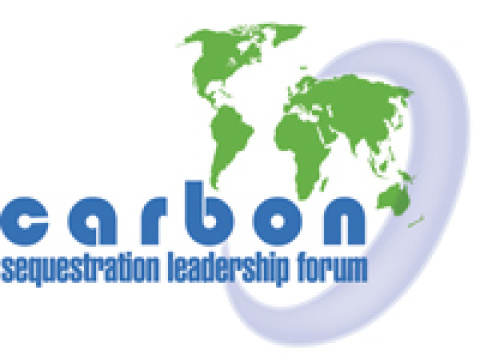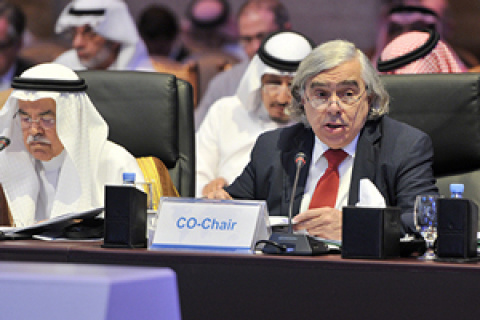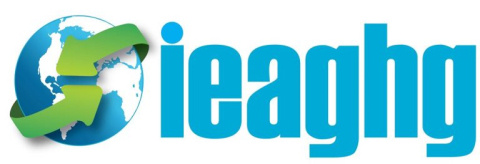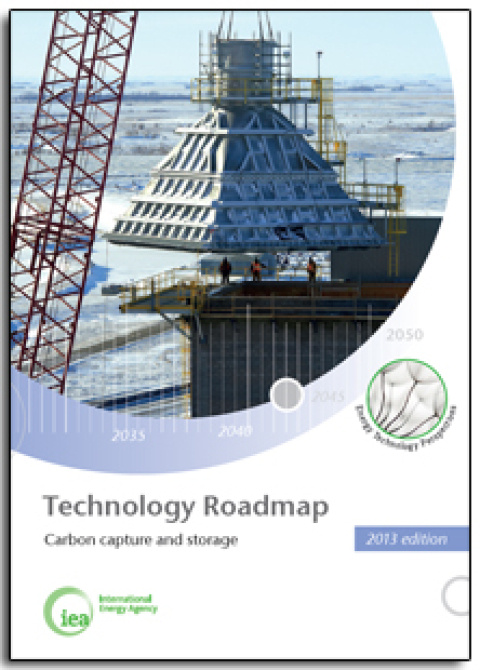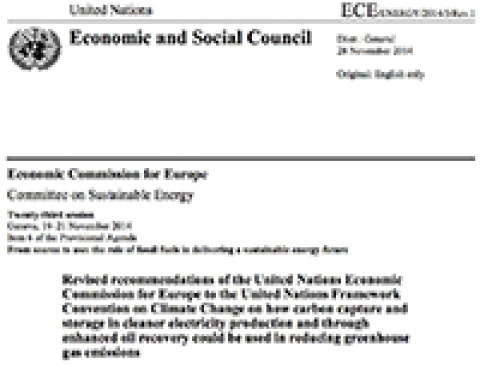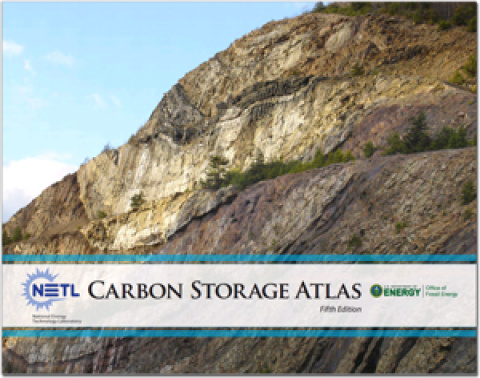Carbon Capture and Storage Resources for Conference of Parties
DOE's Carbon Management Program is focused on developing and demonstrating advanced power generation and carbon capture utilization and storage technologies for existing facilities and new fossil-fueled power plants by increasing overall system efficiencies and reducing capital costs. DOE is also collaborating with industry to demonstrate large-scale industrial carbon capture, and storage technology. In the near-term, advanced technologies that increase the power generation efficiency for new plants and technologies to capture carbon dioxide (CO2) from new and existing industrial and power-producing plants are being developed. In the longer term, the goal is to increase energy plant efficiencies and reduce both the energy and capital costs of CO2 capture and storage from new, advanced coal plants and existing plants.
DOE’s efforts are organized in four major areas:
- The Carbon Capture, Utilization and Storage R&D program advances safe, cost effective, capture and permanent geologic storage and/or use of CO2.
- The Advanced Energy Systems program focuses on improving the efficiency of fossil-fuel-based power systems, enabling affordable CO2 capture, increasing plant availability, and maintaining the highest environmental standards.
- The CCUS Major Demonstrations program works in partnership with industry to develop and demonstrate advanced carbon capture, utilization, and storage technologies at commercial scale.
- The Crosscutting Research program serves as a bridge between basic and applied research by fostering the development and deployment of innovative systems for improving efficiency and environmental performance through the research and development of instrumentation, sensors, and controls targeted at enhancing the availability of advanced power systems while reducing costs.
Learn more about DOE's Carbon Capture and Storage Research Programs
The Carbon Sequestration Leadership Forum (CSLF) is a Ministerial-level international climate change initiative that is focused on the development of improved cost-effective technologies for the separation and capture of CO2 for its transport and long-term safe storage. The mission of the CSLF is to facilitate the development and deployment of such technologies via collaborative efforts that address key technical, economic, and environmental obstacles. The CSLF is currently comprised of 25 members, including 24 countries and the European Commission. Membership is open to national governmental entities that are significant producers or users of fossil fuels and that have a commitment to invest resources in research, development and demonstration activities in CO2 capture and storage technologies.Learn more about the CSLF The 6th Ministerial Meeting of the multilateral Carbon Sequestration Leadership Forum was held in Riyadh, Saudi Arabia, on November 1-5. The U.S. delegation was co-chaired by Ernest Moniz, Secretary of Energy, United States, and Ali bin Ibrahim Al-Naimi, Minister of Petroleum and Mineral Resources, Saudi Arabia, and energy ministers from nine other countries were also present, as well as other high level heads of delegation and representatives from multilateral organizations and industry. This year’s CSLF Ministerial was especially important, as it provided a platform for top-level dialogue on the role of CCS technologies immediately prior to the IEA Ministerial and the upcoming 2015 United Nations Climate Change Conference (COP21) in December in Paris. A significant outcome was the release of the Ministerial Communiqué which highlighted several key actions, most notably advocating policy parity for CCS as a clean energy technology.
Read the Ministerial Communiqué
International Journal of Greenhouse Gas Control, Special Issue commemorating the 10th year anniversary of the publication of the Intergovernmental Panel on Climate Change Special Report on CO2 Capture and Storage. CO2 CCS has established a prominent role in the climate change policy debate, especially since the publication of the Intergovernmental Panel on Climate Change (IPCC) Special Report on CCS: IPCC SRCCS (IPCC, 2005). The IPCC SRCCS was a turning point for CCS because it raised the profile of the technology within the expert community that was dealing with climate policy. As a result, CCS then became accepted as a major option for reducing global emissions of CO2 and hence it was included in the long term scenarios where significant greenhouse gas emission reductions were required. The Special Issue looks back on the past ten years of RD&D on CCS, highlighting the readiness of CCS to contribute to global climate mitigation and exploring the advancements in science and technology which have occurred since 2005.
Read a Summary of the Special Issue prepared by the IEA Greenhouse Gas R&D Programme (IEAGHG)
Read the International Journal of Greenhouse Gas Control
Read the IEA CCS Roadmap
As a multilateral platform, the United Nations Economic Commission for Europe (UNECE) facilitates greater economic integration and cooperation among its member countries and promotes sustainable development and economic prosperity through: policy dialogue, negotiation of international legal instruments, development of regulations and norms, exchange and application of best practices as well as economic and technical expertise, technical cooperation for countries with economies in transition. UNECE contributes to enhancing the effectiveness of the United Nations through the regional implementation of outcomes of global United Nations Conferences and Summits. In 2014, the UNECE’s Committee on Sustainable Energy made recommendations to the United Nations Framework Convention on Climate Change on how carbon capture and storage in cleaner electricity production and through enhanced oil recovery could be used in reducing greenhouse gas emissions including how CCS should be treated in a post-Kyoto Protocol agreement, including recommendations for public policy parity, government support for global demonstration projects and investments in CCS in developing countries.
Additional Resources
The IEA Greenhouse Gas R&D Programme (IEAGHG) is an international collaborative research programme established in 1991 as an Implementing Agreement under the International Energy Agency (IEA). The role of the Programme is to evaluate technologies that can reduce greenhouse gas emissions derived from the use of fossil fuels. IEAGHG funds research into carbon capture and storage. IEA GHG's work focuses on technologies that can reduce our carbon emissions, and mitigate climate change and global warming. IEAGHG is a not for profit organisation, and all of their work is subject to peer review ensuring that it remains impartial and unbiased.
For more information visit the IEAGHG website
The Global CCS Institute (GCCSI) is an international membership organisation. GCCSI’s mission is to accelerate the development, demonstration and deployment of carbon capture and storage. One of the activities that GCCSI undertakes is an annual global status report on CCS progress. The 2015 report highlights that the 15 large-scale CCS projects currently in operation around the world have the capacity to capture up to 28 million tonnes of CO2 per year (Mtpa). The report also highlights six additional projects expected to come on line in 2016-7, including three from the U.S.
Read the 2015 Global Status of CCS Report
The U.S. Department of Energy’s (DOE) National Energy Technology Laboratory (NETL) is proud to release the fifth edition of the Carbon Storage Atlas (Atlas V). Production of Atlas V is the result of collaboration among carbon storage experts from local, State, and Federal agencies, as well as industry and academia. Atlas V provides a coordinated update of CCS potential across the United States and other portions of North America. The primary purpose of Atlas V is to update the CO2 storage potential for the United States and to provide updated information on DOE’s carbon storage activities and field projects.Link to NETL's Carbon Storage Atlas


